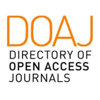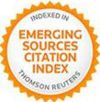Abstract
In Europe the number of existing buildings is greater than new ones, therefore it is necessary to improve built heritage management through suitable IT tools. Actually, BIM is an innovative methodology to optimize building lifecycle. Since BIM was born for new buildings, there are difficulties in using it for historical architectural heritage. Thus, the purpose of the research is to describe a possible strategy to develop 3D parametric models that can be easily used for many uses through a set of rules based on the description of construction components oriented to different objectives, e.g. restoration, energy saving, structural monitoring, healthcare facilities. This paper aims to discover a possible approach to implement a generic HBIM model which can be developed through the combination with a model based on intelligent agents (ABM).
Keywords
Full Text:
PDFDOI: http://dx.doi.org/10.2423/i22394303v8n2p49
References
Acierno, M., & Fiorani, D. (2017). CPM: Un’Ontologia per il Restauro. ANANKE, Special Issue, 147-152.
Affleck, J. & Kvan, T. (2005). Reinterpreting Virtual Heritage. In Proceedings of 10th International Conference of the Association for Computer-Aided Architectural Design Research in Asia 2005 (1) (pp.169-178), New Delhi (India): CAADRIA.
Apollonio, F.I., Gaiani, M., & Sun, Z. (2012). BIM based Modeling and Data Enrichment of Classical Architectural Buildings. SCIRES-IT SCIentific RESearch and Information Technology, 2 (2), 41-62.
Apollonio, F.I., Gaiani, M., & Sun, Z. (2016). A Reality Integrated BIM for Architectural Heritage Conservation. In A. Ippolito (Ed.), Handbook of Research on Emerging Technologies for Architectural and Archaeological Heritage (pp. 31-66). Roma, Italy: La Sapienza Università Editrice.
Biagini, C. & Donato, V. (2014). Building Object Models (BOMs) for the documentation of historical building heritage. In: Revisiones del futuro. Previsiones del pasado. (pp.442-448).Rosario, Argentina: CUES and FLASHBAY.
Brumana, R., Oreni, D., Raimondi, A., Georgopoulos, A., & Bregianni, A. (2013). From survey to HBIM for documentation, dissemination and management of built heritage: the case study of St. Maria in Scaria d’Intelvi. In 2013 Digital Heritage International Congress (DigitalHeritage) (1) (pp. 497-504). Marseille, France:IEEE.
Carrara, G., Fioravanti, A., Loffreda, G., & Trento, A. (2009). An Ontology-based Knowledge Representation Model for Cross-Disciplinary Building Design. In Proceedings of eCAADe27 (pp. 367-374). Istanbul, Turkey: eCAADe.
Donato V. (2018) Le tarsie prospettiche in Toscana: dall’acquisizione alla gestione del dato attraverso tecniche BIM-based. In M. T. Bartoli and M. Lusoli (Ed.), Diminuzioni e accrescimenti. Le misure dei maestri di prospettiva (p.157-178). Florence, Italy: Firenze University Press.
Dore, C. & Murphy, M. (2012). Integration of Historic Building Information Modeling and 3D GIS for Recording and Managing Cultural Heritage Sites, In 18th International Conference on Virtual Systems and Multimedia: "Virtual Systems in the Information Society", (pp.369-376). Milan, Italy: IEEE.
Eastman, C., Teicholz, P., Sacks, R., & Liston, K. (2011), BIM Handbook: A Guide to Building Information Modeling for Owners, Managers, Designers, Engineers and Contractors (2). New Jersey: John Wiley & Sons Inc.
Garagnani, S. & Manferdini, A.M. (2013) ‘Parametric Accurancy: Building Information Modeling Process applied to the Cultural Heritage Preservation, In International Archives of the Photogrammetry, Remote Sensing and Spatial Information Sciences (pp. 87–92). Trento, Italy: Copernicus Publications.
Gargaro, S. & Fioravanti, A. (2015) Towards a Context Knowledge Taxonomy - Combined Methodologies to Improve a Fast-Search Concept Extraction for an Ontology Population. In Proceedings of eCAADe33 (1) (pp. 137-147). Vienna, Austria: eCAADe.
Kalay, Y.E., Kvan, T. & Affleck, J. (2007), New Heritage – New Media and Cultural Heritage, London, EN and New York, NY: Routledge
Ippolito, A. (2015). Digital documentation for archaeology. Case studies on Etruscan and Roman heritage. SCIRES-IT SCIentific RESearch and Information Technology, 5 (2), 71-90.
Murphy, M., McGovern, E., & Pavia, S. (2013), Historic Building Information Modeling – Adding intelligence to laser and image based surveys of European classical architecture. ISPRS Journal of Photogrammetry and Remote Sensing, 76, 89-102.
Osello, A. (2012). Il futuro del disegno con il BIM per ingegneri e architetti/The Future of Drawing with BIM for Engineers and Architects. Palermo, Italy: D. Flaccovio.
Ruffino, P.A., & Del Giudice, M. (2018). From geospatial data to information modeling. - In: DN – Building Information Modeling, Data & Semantics (pp. 35-44). Roma, Italia: DEI Tipografia del Genio Civile.
Simeone, D., Cursi, S., Toldo, I. & Carrara, G. (2014). B(H)IM - Built Heritage Information Modeling- Extending BIM approach to historical and archaeological heritage representation. In Proceedings of eCAADe32 (1) (pp. 613-622). Delft, Holland: eCAADe.
Stouffs, R. (2018). A triple graph grammar approach to mapping IFC models into CityGML Building Model. In Proceedings of the 23rd International Conference of the Association for Computer-Aided Architectural Design Research in Asia 2018 (2) (pp.41-50). Hong Kong, China: CAADRIA.
Article Metrics
Metrics powered by PLOS ALM
Refbacks
- There are currently no refbacks.
Copyright (c) 2019 Silvia Gargaro, Matteo Del Giudice, Pablo Angel Ruffino

This work is licensed under a Creative Commons Attribution-NonCommercial-NoDerivatives 4.0 International License.
SCIRES-IT, e-ISSN 2239-4303
Journal founded by Virginia Valzano





